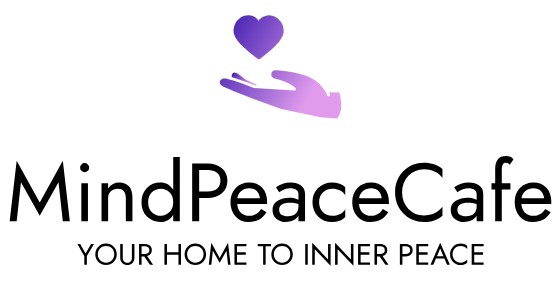The Synchronized Breath: Elevating Collective Serenity
Unleashing the potential of breathwork within group meditation opens a gateway to profound experiences and heightened connectivity. In today’s fast-paced world, the power of breath is often overlooked, yet it serves as a pivotal force in enhancing the collective meditative journey. This article aims to delve into the intricate relationship between breathwork and group meditation, uncovering its science, fostering group dynamics, and offering guidance for leading transformative sessions. As we embark on this journey, we’ll explore the captivating fusion of ancient breathing practices and contemporary group dynamics, aiming to create a resurgence of awareness around the nurturing force of breathwork in collective mindfulness.
1. Introduction: Understanding the Power of Breathwork
Welcome to the world of breathwork and meditation, where the simple act of breathing holds the key to unlocking a deeper sense of collective tranquility and self-awareness. In the hustle and bustle of our daily lives, embracing the transformative power of breathwork within group meditation offers a pathway to newfound serenity and connection. Throughout history, various cultures have harnessed the potency of breath in enhancing mindfulness practices, and today, we’re unraveling its dynamic role in modern group settings. From ancient traditions to present-day techniques, the journey of understanding breathwork’s influence on group meditation is as fascinating as it is enlightening.
The symbiotic relationship between breathwork and group meditation stems from its remarkable impact on our physical and mental well-being. As science delves deeper into the intricate workings of the breath, we’re discovering compelling evidence of its ability to calm the mind, reduce stress, and even influence our emotional state. Moreover, within a group dynamic, synchronized breathing has been found to create a sense of unity and shared experience, elevating the overall effectiveness of the meditation session.
As we navigate this exploration, we aim to demystify the profound impact that deliberate breathing holds within the collective mindful space. Together, let’s embark on a journey to uncover the seamless collaboration of breathwork with group meditation, fostering an atmosphere of connected calmness and shared purpose.
2. The Science of Breathwork

Delving into the realm of breathwork, we encounter a tapestry of physiological and psychological benefits that weave an intricate web of wellness for both the individual and the collective mind. The science of breathwork during meditation unveils a symphony of internal processes that manifest in profound ways, influencing our overall well-being. From a physiological standpoint, deep breathing triggers the parasympathetic nervous system, leading to a state of relaxation and calmness. Within this serene state, our bodies experience a soothing drop in heart rate and blood pressure, while our muscles loosen, allowing for a deeper sense of release and rejuvenation.
On a psychological level, deep breathing serves as a gateway to emotional regulation and mental clarity. As we engage in intentional breathwork, our minds gradually find respite from the whirlwind of thoughts, leading to a quieter, more focused mental landscape. This process has been linked to reduced anxiety and stress, amplifying the meditative experience. Moreover, the practice of deep breathing during group meditation enhances empathy and understanding, fostering a heightened sense of connection and shared purpose among participants.
Diving into the intricate mechanics of breathwork reveals a colorful mosaic of benefits that span both our physical and mental realms, creating a holistic experience that enriches every breath taken during collective meditation.
3. Enhancing Group Dynamics Through Breathwork
When groups come together to embark on a meditative journey, the enchanting dance of synchronized breathwork unfolds, leading to an atmosphere brimming with connectivity and collective synergy. The process of shared breathing within a group meditation setting cultivates a sense of profound togetherness, harmonizing individual energies into a unified flow. This harmony within the collective breath fosters an environment where each participant becomes a thread in the tapestry of shared serenity, enriching the meditation experience for all involved.
Through the lens of breathwork, group dynamics take on a new dimension, where the rhythmic inhalations and exhalations become the silent language of unity. As participants align their breath with those around them, a palpable essence of interconnectedness emerges, creating an invisible yet palpable bond that transcends verbal communication. This bond forms the groundwork for enhanced empathy and cooperation within the group, as each individual’s breath becomes a part of the collective breath, nurturing a shared sense of purpose and understanding.
In the symphony of group meditation, synchronized breathwork stands as the conductor, orchestrating a collective journey of tranquility and interconnectedness. The shared rhythm of breath creates a seamless fusion of energies, intertwining the individual with the collective, ultimately giving rise to a transformative experience that transcends the boundaries of the self.
4. The Art of Guiding Breathwork in Group Meditation
Guiding breathwork within a group meditation session is akin to conducting a mesmerizing symphony, where each breath becomes a note in the melody of collective mindfulness. An effective guide not only leads participants through the art of intentional breathing but also creates an environment that nurtures trust, exploration, and inner peace. The essence of this art lies in seamlessly weaving together various breathwork techniques, ensuring that each participant feels supported and empowered on their meditative journey.
Through insightful methods and gentle encouragement, a breathwork guide becomes a facilitator of shared experiences, crafting a space where individuals can engage in breathwork with a sense of safety and unity. Effective guidance involves not only demonstrating breathing techniques but also creating an environment that allows participants to explore their inner landscapes, enabling them to harness the power of their breath in unison with others around them.
By incorporating diverse breathwork exercises and adapting to the unique needs of the group, a skilled guide ensures that the collective meditation transcends individual experiences, leading to a shared sense of tranquility and connectedness. The art of guiding breathwork involves not just instructing techniques but fostering an atmosphere where each participant feels valued, supported, and fully embraced by the collective breath of the group.
What are some effective breathwork techniques for group meditation?
Effective breathwork techniques for group meditation often involve synchronized breathing exercises, where participants harmonize their breath in rhythm. This can be achieved through intentional deep breathing, box breathing, or pranayama techniques, fostering a sense of collective unity and shared tranquility. Additionally, guided imagery combined with breathwork can enhance the group dynamic, encouraging visualization alongside synchronized breathing for a deeper meditative experience.
How does synchronized breathwork impact group dynamics during meditation?
Synchronized breathwork in group meditation enhances connectivity and fosters a shared sense of purpose among participants. It creates a harmonious atmosphere, promoting empathy, cooperation, and a deeper understanding within the group. Through shared breathing, individuals synchronize their energies, creating a unified flow that amplifies the overall effectiveness of the meditation session, fostering a profound sense of togetherness and tranquility.
What role does a breathwork guide play in group meditation?
A breathwork guide serves as a facilitator of shared experiences, creating an environment of trust and exploration. Their role involves not only demonstrating breathing techniques but also fostering an atmosphere where participants can explore their inner landscapes and engage in breathwork exercises with a sense of safety and unity. An effective guide ensures that the collective meditation transcends individual experiences, leading to a shared sense of tranquility and connectedness.




